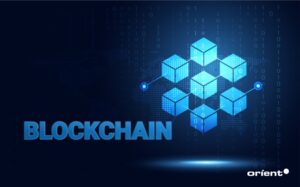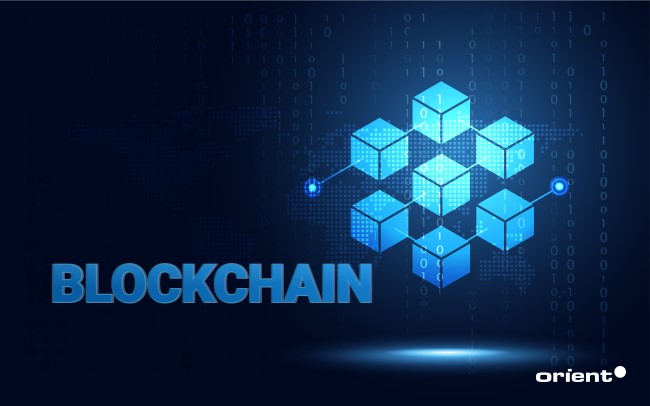
The internet as we know it is evolving, and Web 3.0 is poised to redefine the digital landscape in ways that were once the stuff of science fiction. At the heart of this transformation is blockchain technology, which is not only revolutionizing the way we think about data security, privacy, and transparency, but is also serving as the foundational layer for the decentralized web. As we step into 2024, the role of blockchain in shaping Web 3.0 has become more critical than ever, with key developments setting the stage for the next phase of the internet.
What is Web 3.0?
Web 3.0, often referred to as the “decentralized web,” is the next generation of the internet that promises to return control of data, content, and assets to users rather than large, centralized platforms. Unlike Web 2.0, where social media giants, tech monopolies, and cloud providers control most of the data and digital services, Web 3.0 envisions a decentralized, open-source web where users can interact peer-to-peer (P2P), share information without intermediaries, and own their digital assets through blockchain-based technologies.
Blockchain is the technology that enables this decentralization. It provides a secure, transparent, and immutable ledger for transactions and data, ensuring that users can interact with the internet without relying on centralized entities for verification or trust.
Key Developments in Blockchain for Web 3.0 in 2024
1. Decentralized Finance (DeFi) and Web 3.0 Integration
One of the most significant developments in blockchain for Web 3.0 is the rise of Decentralized Finance (DeFi). DeFi refers to a suite of financial services—such as lending, borrowing, trading, and investing—that are built on blockchain platforms without the need for traditional financial intermediaries like banks or brokers.
In 2024, we are seeing a deeper integration of DeFi protocols into Web 3.0 platforms. As users seek to take control of their financial assets, DeFi platforms offer them a way to interact directly with smart contracts and decentralized applications (dApps), giving them more autonomy over their money. Moreover, Web 3.0 is seeing a convergence of traditional finance with decentralized finance, where central banks are exploring central bank digital currencies (CBDCs), which could run on blockchain networks to maintain trust and transparency.
The growth of DeFi has laid the groundwork for a fully decentralized economic ecosystem where users can transact, store, and invest in a trustless manner, significantly altering the way financial markets operate. This shift empowers users, reduces costs, and creates new opportunities for wealth creation, all of which align with the values of Web 3.0.
2. Non-Fungible Tokens (NFTs) and Digital Ownership
NFTs have been one of the most talked-about blockchain innovations, and their integration into Web 3.0 is becoming increasingly significant. NFTs allow for the tokenization of unique digital assets, such as art, music, video, and even virtual real estate, providing a mechanism for true digital ownership. In 2024, we are witnessing a maturation of the NFT space, with applications extending far beyond the digital art world.
Web 3.0 platforms are using NFTs to enable users to own and control their digital identities, virtual goods, and assets in ways that weren’t possible in earlier versions of the internet. For example, virtual worlds like Decentraland and The Sandbox are powered by blockchain-based NFTs, allowing users to buy, sell, and build on virtual real estate. These platforms are creating new economic ecosystems where users can monetize their creativity, collaborate in decentralized spaces, and build unique virtual experiences.
The continued development of NFTs in Web 3.0 also promises to disrupt industries such as gaming, entertainment, and intellectual property, offering more transparent and equitable models for creators and consumers alike.
3. Interoperability and Cross-Chain Compatibility
As blockchain networks proliferate, one of the major challenges for Web 3.0 has been enabling interoperability across different blockchain ecosystems. In 2024, significant strides have been made to solve this problem, with cross-chain protocols and bridges that allow assets and data to move seamlessly between different blockchains.
Projects like Polkadot, Cosmos, and Chainlink are leading the charge in creating an interconnected blockchain ecosystem. These developments will allow Web 3.0 users to access a broader array of decentralized services and applications without being limited to a single blockchain network. For example, users could interact with DeFi protocols on Ethereum, trade NFTs on Solana, and access data storage on Filecoin—all while maintaining a single, unified digital identity. This interoperability unlocks new possibilities for decentralized applications (dApps), enabling them to reach a larger user base and enhance the overall utility of the Web 3.0 ecosystem.
4. Decentralized Identity (DID) and Privacy Enhancements
A key tenet of Web 3.0 is the ability for individuals to have greater control over their personal data and online identity. Blockchain technology plays a critical role in enabling Decentralized Identity (DID) systems, which allow users to own and manage their digital identities without relying on centralized entities like Google or Facebook.
In 2024, DID protocols are gaining traction as a privacy-first approach to digital identity. Blockchain-based solutions like SelfKey, uPort, and Civic are providing users with more control over their personal data, allowing them to selectively share information and authenticate themselves across various Web 3.0 platforms. This shift towards user-owned identity systems reduces the risks associated with data breaches and centralized data silos, while also providing users with more privacy and autonomy.
Furthermore, blockchain’s inherent transparency and immutability can help verify identity credentials in a secure and verifiable way, fostering trust in online interactions and transactions.
5. Decentralized Autonomous Organizations (DAOs)
The rise of Decentralized Autonomous Organizations (DAOs) is another major development in Web 3.0. DAOs are organizations that are governed by code rather than a centralized board of directors. Through blockchain technology, DAOs allow communities to pool resources, make decisions collectively, and execute smart contracts without intermediaries.
In 2024, DAOs are expanding beyond just crypto and blockchain communities, with businesses, non-profits, and even governments exploring DAO-based governance models. DAOs offer a more democratic and transparent way to run organizations, where stakeholders can vote on key decisions and ensure that all actions are recorded on the blockchain for public scrutiny.
This democratization of decision-making is a fundamental shift that aligns with the principles of Web 3.0—empowering individuals and communities to take control of their governance and eliminate the need for traditional centralized authorities.
Conclusion
As we move into 2024, blockchain technology continues to be the bedrock upon which Web 3.0 is being built. The evolution of DeFi, NFTs, decentralized identity, interoperability, and DAOs are just a few examples of how blockchain is enabling a more open, secure, and user-centric internet.
These developments are not only reshaping industries but also laying the foundation for a new digital economy where individuals have control over their data, assets, and interactions online. As Web 3.0 becomes increasingly realized, blockchain will undoubtedly remain at the forefront of this transformation, unlocking a future where decentralization is the standard, and users are the true owners of the digital world.
The promise of Web 3.0 is not just about new technologies—it’s about a new internet, one that is built on trust, privacy, and empowerment, where blockchain is the key to unlocking its full potential. 2024 will be a pivotal year in this journey, and those who are able to harness the power of blockchain will play a central role in shaping the future of the decentralized web.




